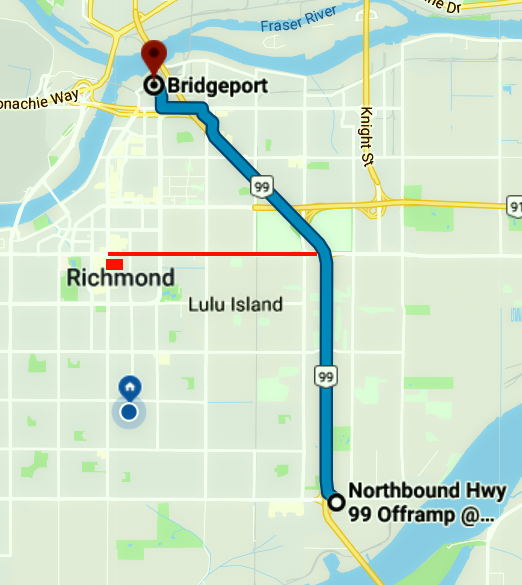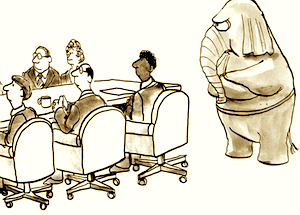Note: Updated June 25, 2021.
In brief:
Replacing the legacy tube (existing tunnel) with an 8-lane tunnel expansion is the best viable option for Richmond/Delta environmental benefits and congestion if it has no counterflow lanes. Adding more than 6 traffic/transit lanes would tend to increase congestion in Richmond, and a 6-lane tube with counterflow lanes would be worse than an 8 lanes with no counterflow lanes. According to the Cowdell Report, one of the main values of a new tube is to provide greater capacity in the off-peak direction (resulting in acceptable trip-time reliability), which this configuration would enable.
A fixable shortcoming of the current plan is that it under-uses the Legacy Tube (existing tunnel). It also shortchanges sustainable modes of transport. That mostly means active transport such as cycling, walking and rolling, which are traditionally self-powered. They are increasingly motor-assisted. Metro Vancouver has lagged behind the trend but will catch up. Richmond/Delta can easily be at the leading edge of increased active transport and the range of sustainable modes of transport. At low cost, Richmond and Delta could get many significant benefits.
This short article, written primarily from a Richmond/Delta perspective, features active transport (and sustainable modes) in the context of other important considerations for Massey Crossing decisions, wth particular attention to aspects that most people are not aware of.
______________
One consistently stated intent of BC’s George Massey Crossing Project Team is to retain the Legacy Tube (existing tunnel) as a utility corridor, at least for the electric-power transmission line—and that matters. But the Legacy Tube can also serve other valuable uses throughout the life of the expanded tunnel.
A preventive purpose is to block the 2-metres-deeper dredging of the Fraser ship channel that the Vancouver Fraser Port Authority (VFPA) has long wanted. That matters very much.
Note: Instead of being semi-cloaked, as it has usually been its dredging intents, VFPA has overtly withdrawn its deep-dredging concept. No doubt that is because deeper dredging would hinder approval of Roberts Bank Terminal 2. The intended dredging would add to the “cumulative effects” of RBT2 and other factors that threaten the ecological health of the estuary.) But it’s a safe bet that VFPA will revisit the dredging when the RBT2 factor allows.
Like RBT2, the dredging would be ecologically disastrous for the Fraser Estuary.
Another note: Unlike the Legacy Tube, which is 22 feet deep, the planned 8-lane new tube(s), at 29.5 feet deep, would not block VFPA from dredging 2 metres deeper (6.5 feet deeper).
There are also at least two promising options for safe-transport use of the Legacy Tube:
- If Cascadia high speed rail goes ahead, crossing the Fraser through the Legacy Tube route would be positive for Climate Action, as the minimal extent of construction would minimize GHG emission.
- The Legacy Tube could enable a major boost for sustainable modes of transport. It has enough total width for (a) increased motor-assisted bicycles, scooters, etc., and (b) increased self-powered transport—walking, cycling, etc. In each direction, there would be room for fast modes on the left, brisk modes in the middle, and walking-speed modes on the right.
- The latter safe-transport use could be thought of as the Richmond-Delta byway, like traditional byways that people used on foot or horseback, but with new modes in the horseback role. The byway would connect with user-friendly routes, including the Shell Trail system and Delta equivalents.
A related factor that decision-makers would need to collegially deal with is the Project Team’s comments about saving the cost of bringing the Legacy Tube to current seismic standards. That very important goal seems manageable in the context of the Cowdell Report, which states:
[The Tunnel Replacement Project] did not consider that [ground improvement] provided for a new tunnel adjacent to the Tunnel could potentially be designed to also improve the seismic performance of the Tunnel. This idea is supported by the Tunnel Expert Panel and by the analysis completed for this Review. (p. 80)
As the project team has shown, (a) the new tube(s) will be on the upriver (east) side of the Legacy Tube, perhaps with a cutoff wall between, so ground improvement protecting the new tube(s) would also protect the Legacy Tube. (b) Downriver, on the west side, the only place for ground improvement is directly west of the Legacy Tube. Therefore new-tube ground improvement would dissipate seismic waves from either side before they reach the Legacy Tube.















 As an old saying goes, “Who’d have thunk it?”
As an old saying goes, “Who’d have thunk it?”



 It had been the expected way to expand the tunnel ever since 1955, when the engineering consultants recommended it in the Fraser River Highway Crossing at Deas Island report. That obvious method was to add a tunnel tube in the tunnel corridor to expand the tunnel by at least two lanes. (See page 13 in this excerpt from the
It had been the expected way to expand the tunnel ever since 1955, when the engineering consultants recommended it in the Fraser River Highway Crossing at Deas Island report. That obvious method was to add a tunnel tube in the tunnel corridor to expand the tunnel by at least two lanes. (See page 13 in this excerpt from the  The project included that long-intended step in Scenario 4, “Maintain Existing Tunnel and Build New Crossing along Highway 99 Corridor” (Phase 2 Discussion Guide, p. 2.)
The project included that long-intended step in Scenario 4, “Maintain Existing Tunnel and Build New Crossing along Highway 99 Corridor” (Phase 2 Discussion Guide, p. 2.)

























 Safety has become Premier Christy Clark’s top reason to scrap the Massey Tunnel, and she’s voiced three safety concerns on TV. I’ll ask her about them.
Safety has become Premier Christy Clark’s top reason to scrap the Massey Tunnel, and she’s voiced three safety concerns on TV. I’ll ask her about them.